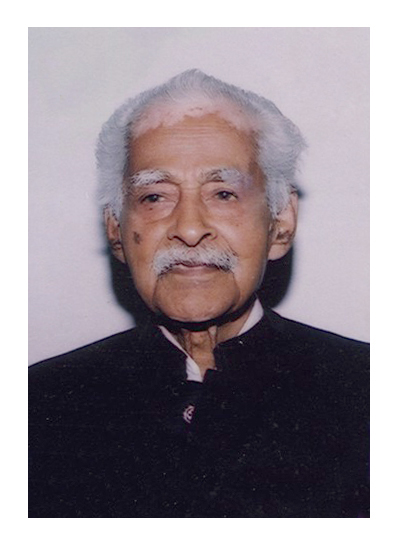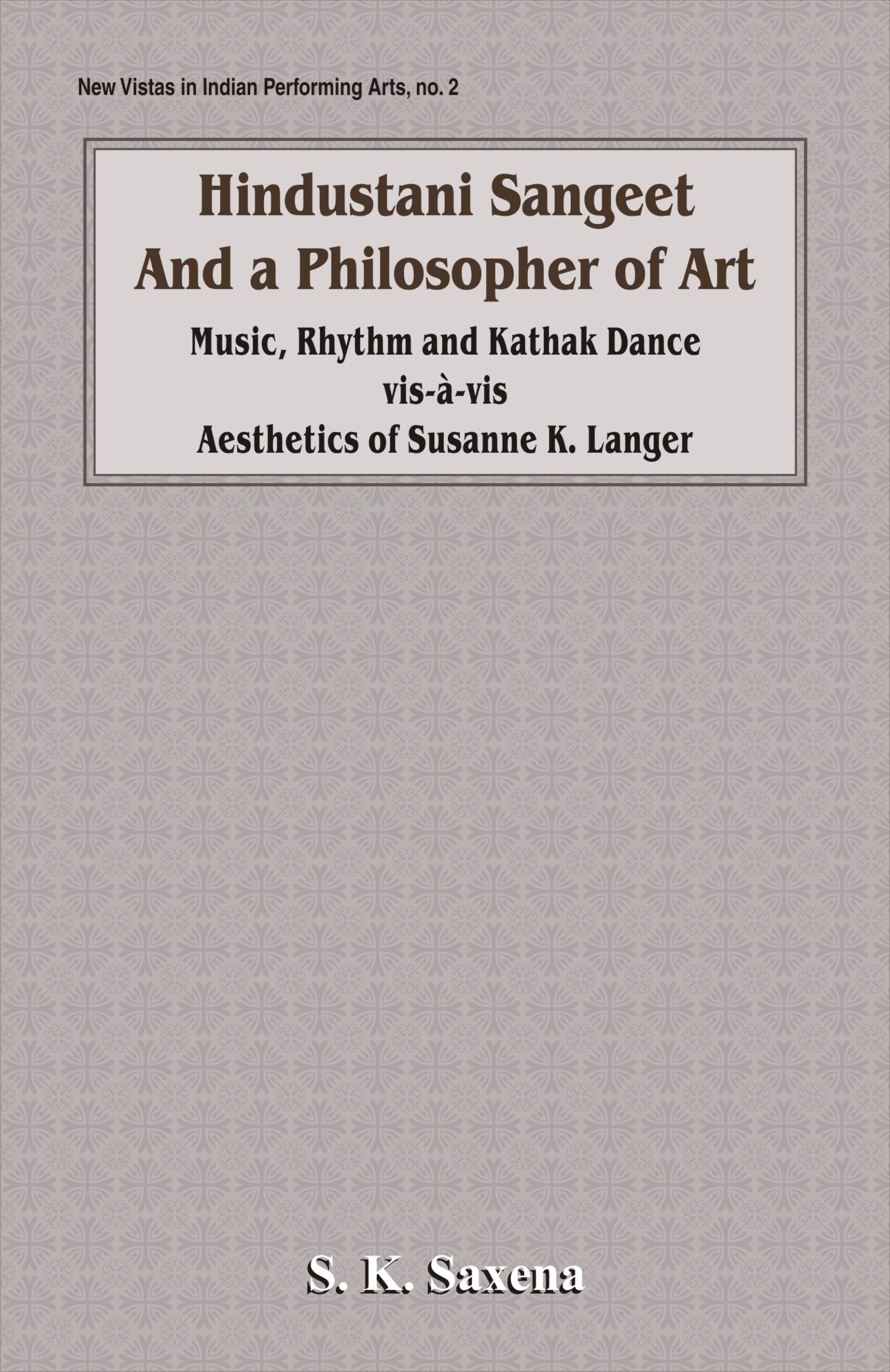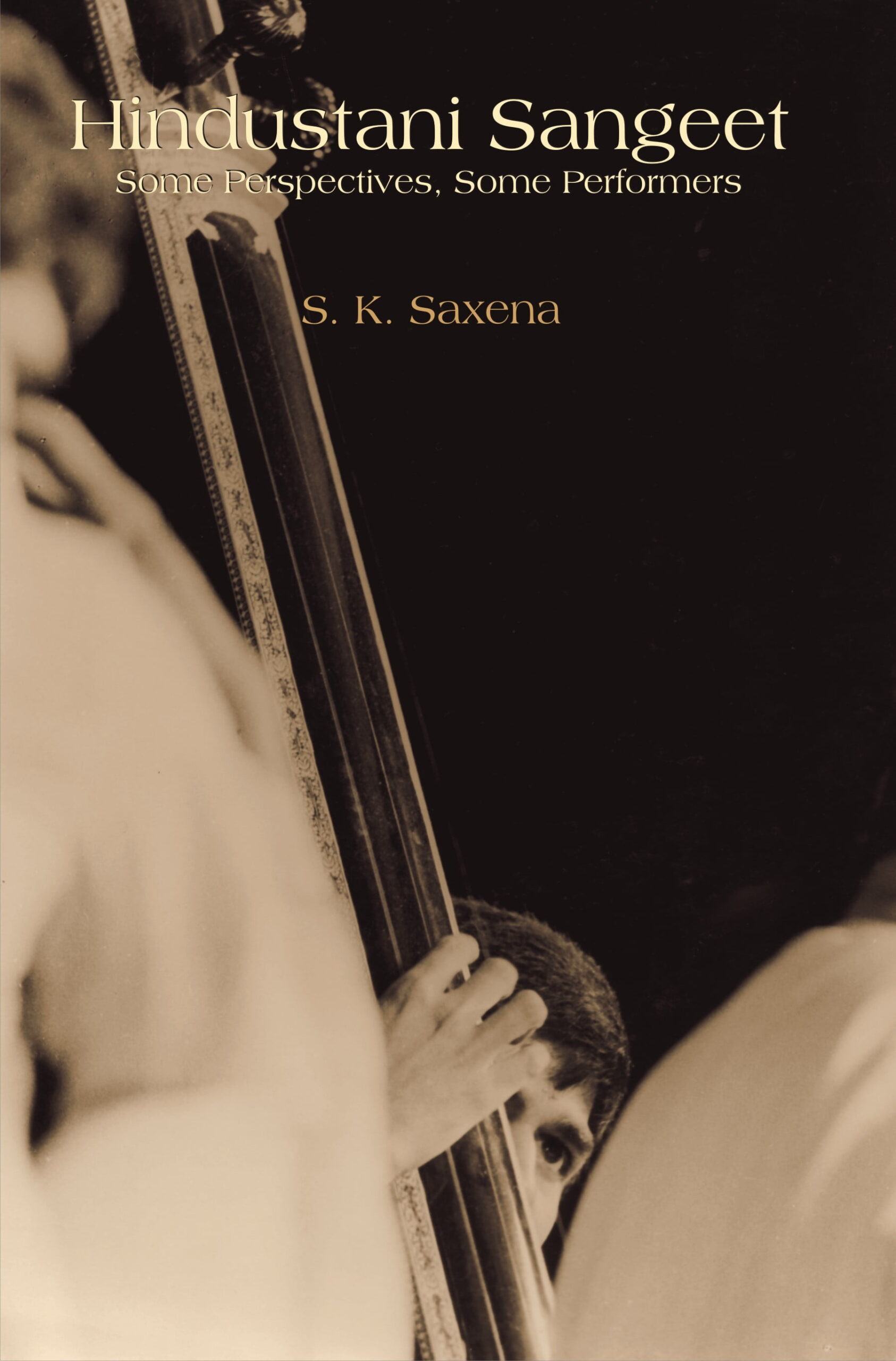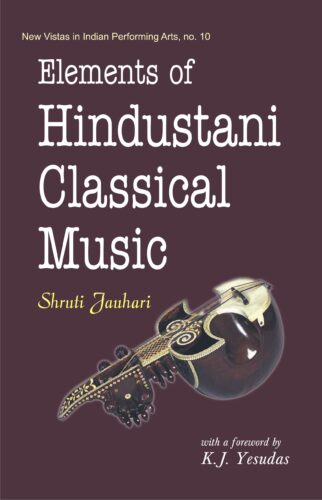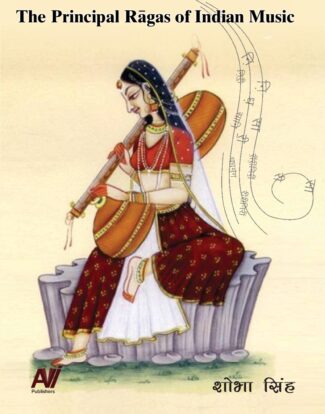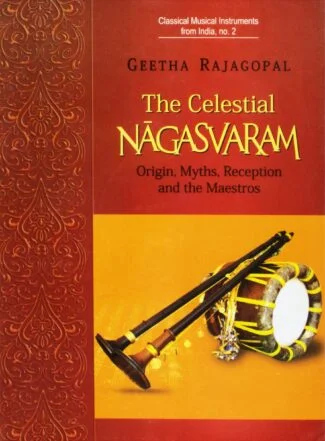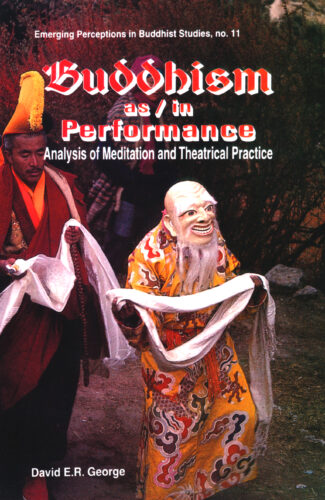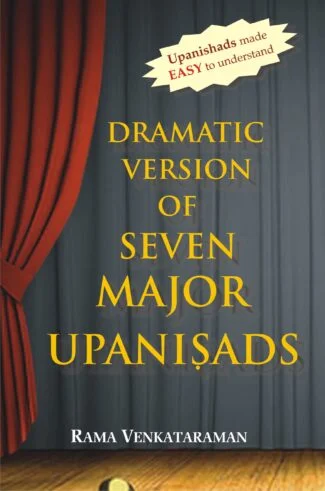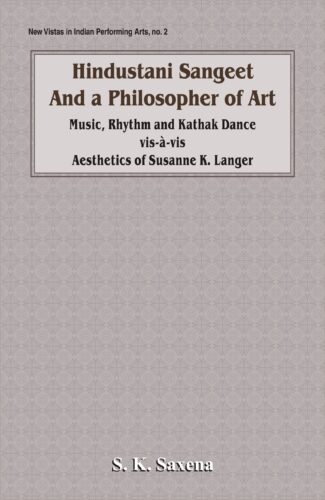

Hindustani Sangeet a...
Hindustani Sangeet and a Philosopher of Art
usic, Rhythm, and Kathak Dance vis-a-vis Aesthetics of Susanne K. Langer by: Sushil Kumar SaxenaThe book seeks to weigh some basic facts and concepts of Hindustani Sangeet (music, rhythm and Kathak dance) against the art theories of Susanne K. Langer, an eminent aesthetician of the recent past, incorporating numerous illustrative references to Hindustani sangeet.
$34.00
ISBN: 9788124601808
Year Of Publication: 2001
Edition: 1st
Pages : xiii, 383
Bibliographic Details : Bibliography; Index
Language : English
Binding : Hardcover
Publisher: D.K. Printworld Pvt. Ltd.
Size: 23 cm.
Weight: 700
The book is decidedly the very first of its kind. It seeks to weigh some basic facts and concepts of Hindustani sangeet (music, rhythm, and Kathak dance) against the art theories of Susanne K. Langer, an eminent aesthetician of the recent past; but nowhere without meticulous attention to the text of her writings. The expression theory of art has for long dominated the history of aesthetics. At the hands of Langer, however, the theory takes a new turn. She conceives of art not as a direct self-expression of the artist’s immediate affective state, but as a symbolic expression of his knowledge of what she terms variously as felt life, sentience, or forms of feeling. Drawing freely upon examples from the region of Hindustani sangeet, the present book accepts Langer’s protest against the popular view of artistic expression, but contends that there is a good deal in our music and dance which has nothing to do with feeling, and is admired simply because of its sweetness, clarity, shapeliness, and accordance with grammatical norms. In the chapter on music, while discussing Langer’s emphasis on commanding form in a total performance, the author proposes a quite new definition of raga which seeks to integrate the various points in its traditional characterizations. The third chapter too, which deals with Langer’s view of rhythm, is not merely explanatory, but ventures to propose a fresh and fairly defensible definition of rhythm. The closing chapter, devoted to dance, not only essays to meet some key objections to Langer’s writing on this art, but clarifies some atypical language that she uses in this context: apparition of vital powers; the dynamic image; virtual realities; and the created, superhuman dance-personality. But perhaps the two most striking features of the book are: first, a lucid exposition of the essentials of Langer’s aesthetics in the opening chapter; and, second, abounding illustrative references to Hindustani sangeet.
Preface
Acknowledgments
1. Langers Theory of Art : Some Essentials
Art as Expression
Langer on Expression: Some Questions
Creation of Art
Some Basic Distinctions
Artistic Expression as Logical
Art as Symbolic
Livingness and Organic Character of Art
Organic Form and Rhythms: Primary, Secondary
An Important Distinction
Art-Reality Difference (Contd.)
How Art can (yet) Symbolize LIfe
Sources of Livingness in Art
Felt Life and Art: A Parallel
Organic Unity and a Poem
Transformation of Life in Art
The Poem-Again
Life or Import of a Work of Art
The Expressed in Art: Interpreting Langers View
Form in Art
Form, Artistic Import, and Logical Intuition
Some Critical Remarks
Art and the Forms of Feeling
Langer on Poetry: A Criticism
Residual Disagreements
2. Of Music: Langer and an Indian Genre
Raga in Indian Music
Composition in Music
Musical Elements and Acts in Life
Objectivity of Composition (or Bandish)
Commanding Form Composition or Raga?
Is Full-Blown Alapa a Form?
Langer on Music and Feeling
The Great Office of Music
The Crux of Langers View
The Value of Music
Tonal Structures and Forms of Feeling
Is Music Essentially Non-Representational ?
Music, Pure Duration, and Lived Time
Is the Import of Music Symbolic ?
Intuitive Seizure of Musics Import
But, then, how is Musics Sensuous Form Symbolic ?
An Alternative: The Beautiful in Music
Illusions in Music and its Great Office
Musics Substantial Qualities
The Unity of Musical Form — Illustrated
Identical Gestalts with Unlike Expressiveness
How is a Work Individual ?
Artistic Form as Vital, Organic
Art-Elements and Life-Acts Anew
Dialectic, Phase Principle, and a Works Unity
Virtual Time (or Growth) in Music and in non-Occurrent Arts
But is All Virtual Motion in Art Growth?
Substantive, Bodily Character of the Art Symbol
3. Imaging Time in Music: Langer and Hindustani Rhythm
Introductory
The Autonomy of (Hindustani) Rhythm
` Langer on Rhythm
What is Rhythm: A Proposal
Three Critical Questions
Rhythm and Life in Drama
4. Magic in Movement: Langer and Kathak Dance
What is Kathak?
Langer : The Basic Negations
Langers Positive Views
Gesture as the Basic Abstraction
The Dynamic Image
Tensions and Other Elements in Dance
Power as Incarnate, Radiated
Expression in Dance and Drama
Some Seeming Oddities
Summing Up
Bibliography
Index


